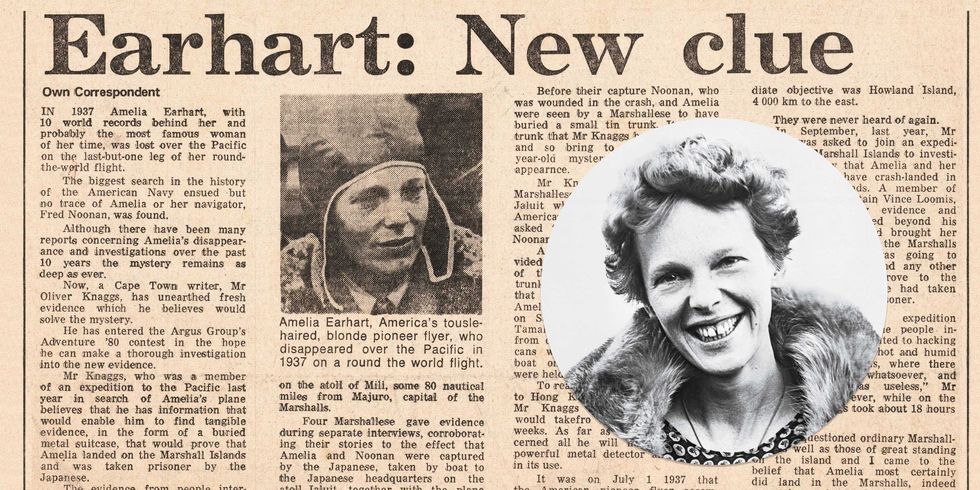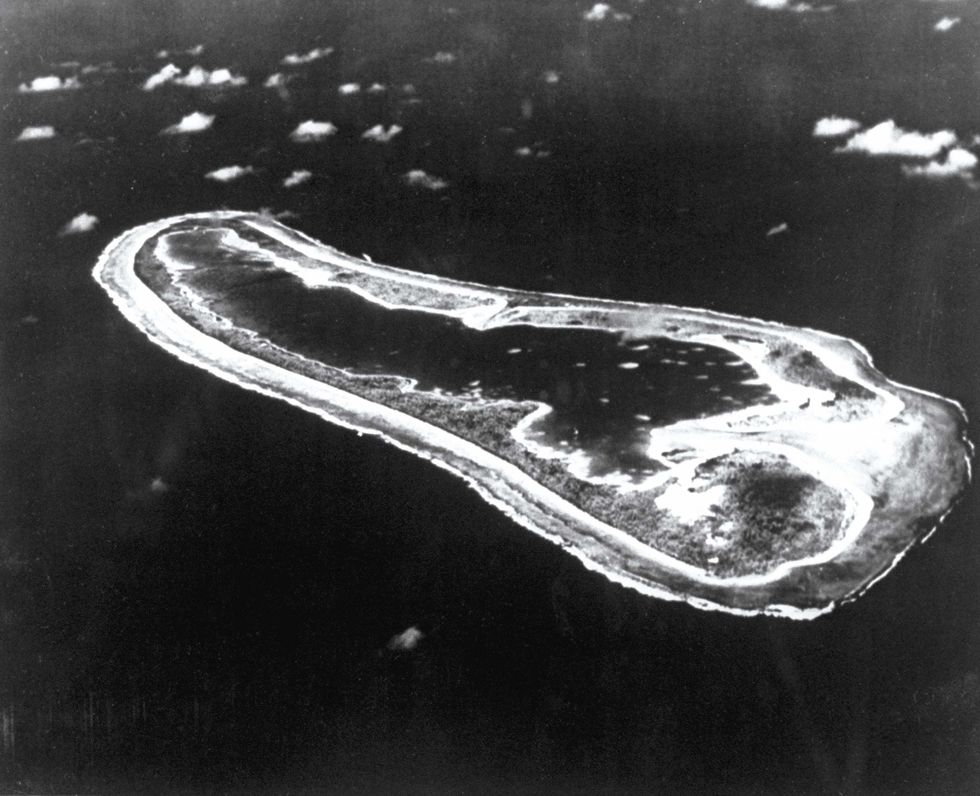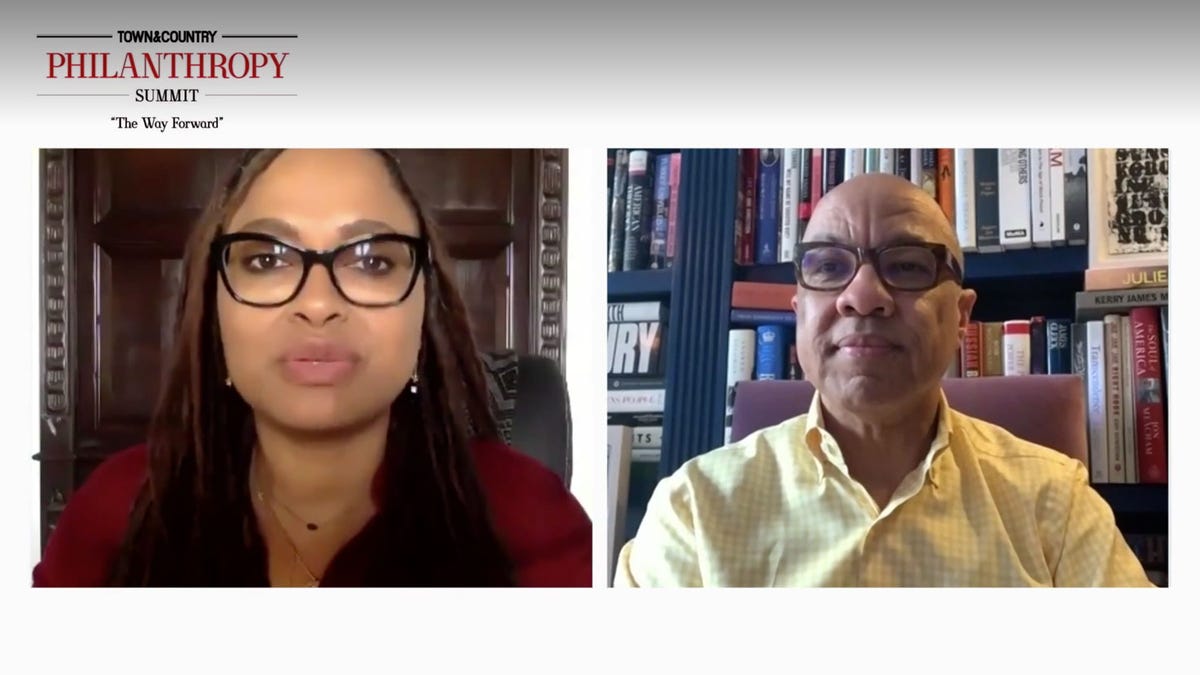It was a still and searing morning in Lae, in what is now Papua New Guinea, as Amelia Earhart taxied her Lockheed Electra onto the primitive 1,000-yard runway and pointed her nose at the Huon Gulf. Friday, July 2, 1937: one more in a long string of days and takeoffs during which almost 22,000 miles—nearly the circumference of the earth—had passed under her wings.
Fatigued from her punishing schedule and ill from a bout of dysentery in Bandung, she was now stabbing at Howland Island, two time zones and 2,556 miles from Lae, a speck in the unfathomable Pacific that, even if she and her navigator Fred Noonan were dead on course, could be completely obscured by a poorly timed cloud.
Steadying the Electra, Earhart roared down the runway, throwing dust. Five hundred feet, 600 feet, 700. With 50 yards to go, the Electra bounced hard over a small ridge and pitched out over the gulf, albatross-heavy, spitting ocean spray from her engines. Finally she began to climb, a smudge on the horizon, before passing out of sight.
"Miss Earhart Forced Down at Sea," the front page of the New York Times screamed the following day. "Search Pacific for Amelia," the Chicago Daily Tribune pleaded. But though the U.S. Navy and Coast Guard scoured the area for weeks, chasing down well over a hundred reported radio transmissions and covering some 250,000 square miles at an unheard-of expense of $4 million, they found nothing. Her body never recovered, her final chapter unknown, she has never died for us, or so it seems.
Amelia Earhart is always news. And, however improbably, given that 79 years have passed since her mystifying exit, new clues about that exit keep coming: promising sonar images in 2013 of a debris field, possibly unidentified wreckage in the reef off uninhabited Gardner Island (now know as Nikumaroro) in the Phoenix Islands, 356 nautical miles from Howland; new reports that surfaced in 2015 from descendants of an eyewitness claiming that he had seen an American woman with "short hair" and "long boots" and a man who were prisoners on a Japanese ship in the Marshall Islands, perhaps bound for Saipan; in 2007 the surfacing of journal entries made by a Florida woman in July 1937, when—at age 15—she fielded distress calls signed off by a "Mrs. Earhart Putnam" (Putnam was Earhart's married name).
The bulk of the evidence has been compiled by TIGHAR (the International Group for Historic Aircraft Recovery), which now says it may have solved the riddle of Earhart's vanishing. It's a bit of a story. Back in 1940, partial human remains were found on Gardner near the remnants of a campfire, along with an empty sextant box and pieces of a woman's shoe. Eventually a British medical examiner on Fiji determined that the bones belonged to a male of European descent, and interest subsided.
In 1997, however, documents including the medical examiner's report were rediscovered and, at TIGHAR's urging, scrutinized by forensic anthropologists, who decided that the recovered bones seemed "consistent with a female of Earhart's height and ethnic origin." Although the bones themselves unfortunately vanished long ago, the medical examiner's report was reevaluated in October 2016 by a forensic imaging specialist, with particular emphasis on the forearms; this research revealed that the measurements were not only consistent with a woman born in the later part of the 19th century, as Earhart was, but are probably a near perfect match for Amelia herself, judging by photographs.
Whether or not this hypothesis holds up to future scrutiny, the mystery of Earhart's disappearance seems an inadequate explanation for the way she has held our attention through the decades, and will most likely continue to. Her spirit permeates our culture unlike almost any other woman's in history—particularly in the present era, when our cultural lodestones crusade relentlessly to be liked and shared and followed in a quest to render irrelevant, even for the briefest moment, the question, Why should we care?
Her name and visage are as well known in our day as they were in her own. The suspension between the masculine and feminine, undeniable in every photo we have of Earhart, still reads fresh today. The tousled cropped hair and effortless, unstudied glamour. The loose-limbed stance in trousers, shoulders back, boyish and sexy without trying, without changing for or trying to please anyone.
But there's more. Her maverick attitude and unbending fearlessness, the way she flung herself at the sky—all that risk, all those lonely distances—just "for the fun of it." In 1997, Steve Jobs cast her in a "Think Different" ad for Apple among a select pantheon that included Albert Einstein, Muhammad Ali, John Lennon, Mahatma Gandhi, and Maria Callas ("misfits," "rebels," and "troublemakers" who "push the human race forward").

Paula McLain is the author of Love and Ruin, about Ernest Hemingway's marriage to Martha Gellhorn, the New York Times bestseller The Paris Wife, and Circling the Sun, the story of Beryl Markham.















